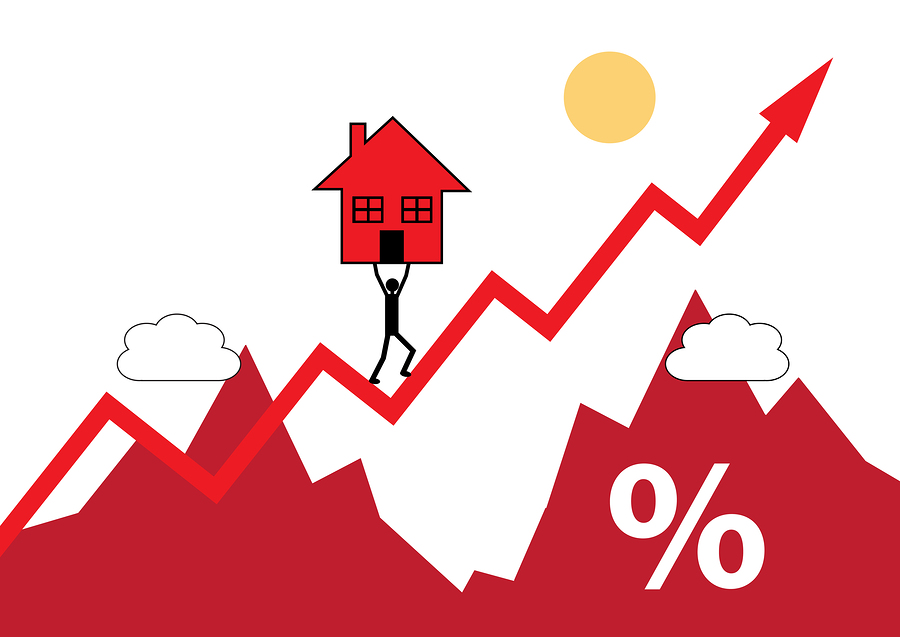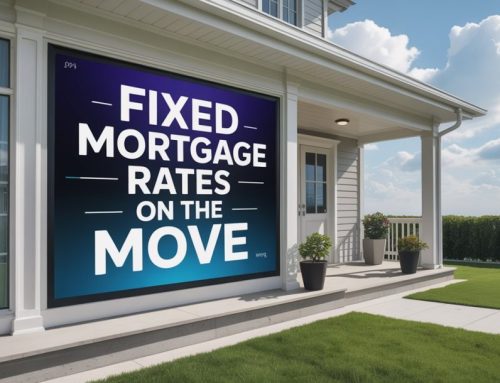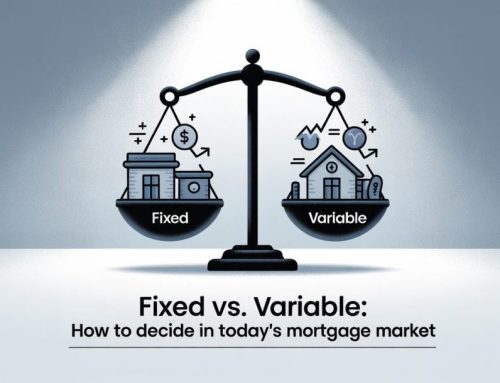It doesn’t matter where you look these days, there is talk about rising mortgage rates. Prime rate has already increased by 1.5% since July 2017, with further increases expected. The next interest rate announcement by the Bank of Canada will be on December 5th, 2018. Prime rate is expected to remain unchanged on this date, however it’s predicted that we will see two more increases before the summer of 2019, with a potential third increase by the end of 2019. This would bring the prime rate up to 4.7%. Even with today’s prime rate at 3.95%, the last time prime was this high was in 2008, where it was at 5.75% at the start of the year while dropping down to 3.50% by years end.
While prime rate does not have a direct influence on fixed mortgage rates, a steadily increasing prime rate will put upward pressure on fixed rates as well. Fixed mortgage rates are determined by bond yields, which can be followed here. Pressure is applied to fixed mortgage rates in the direction they are trending. If they are trending upwards, then upward pressure is placed. If they are trending downward, then downward pressure is placed. One way to protect yourself against rising rates is to lock into a longer term.
Longer term mortgages
The 5 year mortgage term is most common in Canada, but this doesn’t mean it’s right for everyone. For many, a shorter term works better, and for others, a longer term. In a period where it’s easier to predict an upward trend in mortgage rates, longer terms become of more interest. Longer terms are available with 6, 7 and 10 year options. But are they a good idea?
Most people don’t even make it to the end of 5 years, with most breaking their mortgage between 3 and 5 years. If you are a seasoned mortgage borrower, than look back at your history. If you have typically reached the end of your 5 year term and renewed, then you may want to consider locking in for longer.
If you are newer to the mortgage world, you may want to be a bit more cautious. Pretty much everyone thinks they will make it to the end of 5 years, otherwise, we would see more shorter term mortgages to begin with. Circumstances change, and life sometimes throws us curveballs. Five years can be a long time, so before considering locking into a longer term, you need to have a certain degree of certainty in the stability of your life situation.
With higher rates coming, we will likely see fewer people breaking their mortgages when they sell their homes and more porting their mortgage. Over the past 10 years, porting really didn’t make a lot of sense as there were usually more cost effective options. It was more cost effective to break the mortgage and pay the penalty. Now, as well as in upcoming years, more people will be looking to hold onto their lower rate and port their mortgage over to a new home, which can make a longer term mortgage a viable solution.
The dangers of choosing a 10 year mortgage
Let’s say you need a new mortgage of $400,000 with a 25 year amortization. You are considering a 10 year fixed at 4.34% vs. a 5 year fixed at 3.39%. At the end of the first 5 years, you will be $19,171.20 ahead with the 5 year mortgage than you would be with the 10 year (assuming monthly payments with no extra payments made).
The break even rate in the above situation is 5.74%. This means that the 5 year fixed rate at the end of the first 5 years would have to be higher than 5.74% for the 10 year mortgage to have been the right choice. If it’s lower than that, then the 5 year term would have been the better choice. You also need to be positively certain that you will be keeping this mortgage for the full 10 years. This is a pretty big gamble. If you end up breaking your mortgage at 5 years (most don’t even make it that far), then the 10 year mortgage just cost you over $19,000, PLUS your penalty to break the mortgage.
This is exactly why it’s so important that you are comfortable and confident in your ability to hang in there for the long haul. In a rising rate environment, a longer term mortgage could end up saving you more money in the long run. However by taking a longer term, you are betting not only that rates are going to be higher than your break even rate at the end of the term, but also that the longer term mortgage will suit your needs for the full term length.
A 7 year fixed mortgage can be a great alternative!
Something a little safer would be a 7 year fixed, which can be found as low as 3.59%* right now. Just a bit higher than the 5 year fixed at 3.44%*, which significantly minimizes your chance of losing. Using the same $400,000 mortgage amortized over 25 years that we used in the above example, the 7 year term at 3.59% would cost you an additional $3,017.01 (first 5 years) when compared with the 3.44% 5 year fixed option. The break even rate in this example would be 4.07%. This means that the 2 year term would need to be lower than 4.07% for the 5 year term to have made more sense. Since we are comparing 5 year and 7 year terms, we use the difference of 2 years for the break even rate. Considering that today’s 2 year fixed is 3.49% (yes, higher than the lowest 5 year fixed), chances are stronger that the 7 year fixed will be a potential better choice for anyone looking to protect themselves against increasing rates.
You of course have to be confident in your ability to stay in this rate for the entire term, however if you did end up breaking before the end of the 7 years, the additional cost will be minimal when compared to what it would be if you had locked into a 10 year term.
Paul Meredith is the author of the Amazon #1 best selling book, Beat the Bank – How to Win The Mortgage Game in Canada, and has ranked as one of the top 75 mortgage brokers in Canada since 2016. He was a finalist for Mortgage Broker of the Year in 2018, and can be seen as the exclusive mortgage broker on season two of TV’s Top Million Dollar Agent.
*The rates quoted above are for insured mortgages, or those with 20% or greater down payment. For homes purchased after Nov. 30th, 2016, the value of the home must be under $1 million. Additional restrictions may apply. Contact me to find out the lowest rates for your situation.








Leave A Comment